The Yokai Watch games are hugely popular in Japan. For good reason, they’re a lot of fun. The third numeric entry in the series was recently announced, and it’s got me thinking. And worried.
Yokai Watch took Japan by storm last year, selling more games than anyone and even beating Pokémon at the movie box office. I cannot stress enough how big the Yokai Watch was in Japan in 2014.
The games and the anime follow the adventures of a young boy named Keita. He has a Yokai Watch that allows him to see, you guessed it, yokai.
This is something I mentioned last night on Twitter — and something I’m mentioning again here on Kotaku. I’m iffy about Yokai Watch 3‘s setting. Here’s why.
I’m really not convinced Yokai Watch will work as a game set in the U.S. 🙁
— Brian Ashcraft (@Brian_Ashcraft) April 8, 2015
The previous Yokai Watch games are set in Japan. That makes sense because yokai are Japanese. Sometimes, the word “yokai” is translated as “ghosts” in English, but that’s not quite correct. As game translators Hiroko Yoda and Matt Alt point out in their book Yokai Attack!*, yokai are yokai. Traditionally (and historically), they have been a big part of Japanese folklore.
Yokai Watch 3, however, takes place in the United States. Keita, the game’s main character, moves to the States after his father is transferred to a made-up American town called “St. Peanutsberg.”
As you can see in the above image, St. Peanutsberg looks like it was designed by someone who has never been to the US, but has been to the American Waterfront at Tokyo Disney Sea. Which is fine. It can be interesting to see how others depict the US Earthbound, for example, is extra fascinating because of that.
In the game’s debut trailer, Keita says the USA is “totally different from Japan” as several things flash on the screen to show just how different it is.
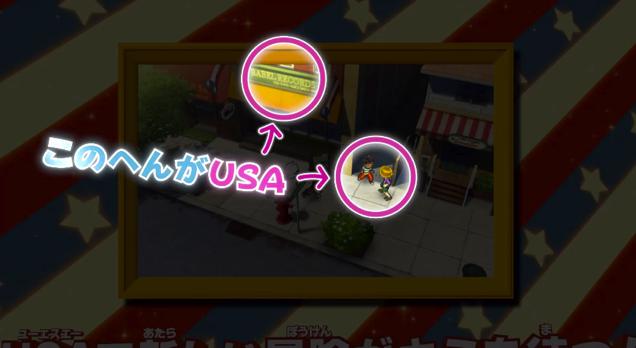
Like, there are people with blond hair and brown skin. Oh. Alright.
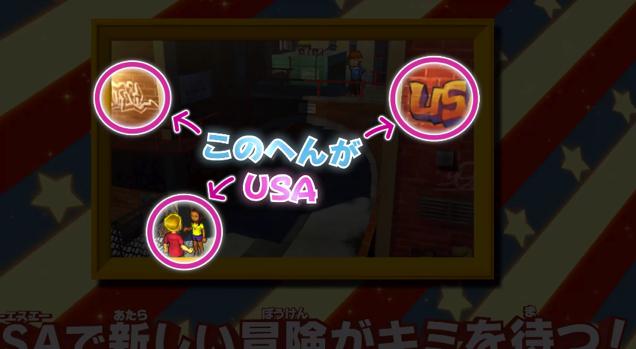
And graffiti. (Never mind that Japan has graffiti, too!)
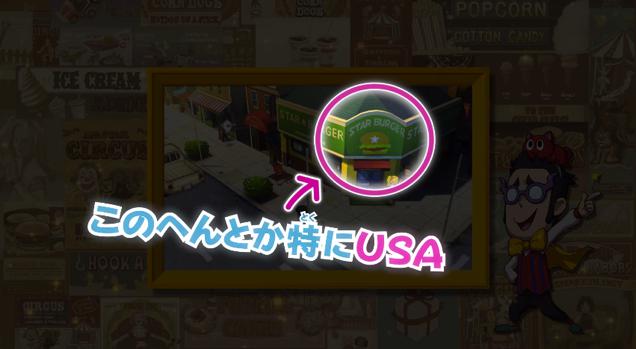
This is “especially” American.
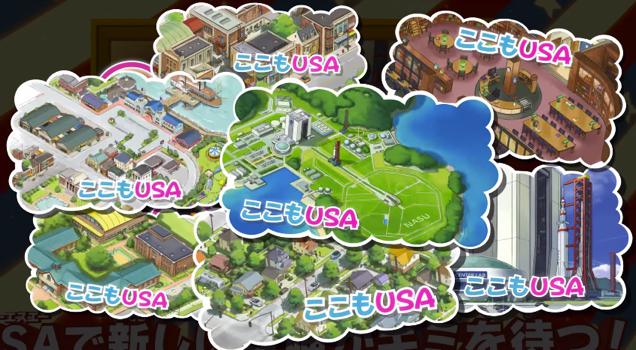
To be fair, the trailer shows a whole host of locations that are “American.”
We get a look at some of the yokai that will appear in the game. There’s a cheerleader yokai, a space ship capsule yokai, and a corn yokai. Heh.
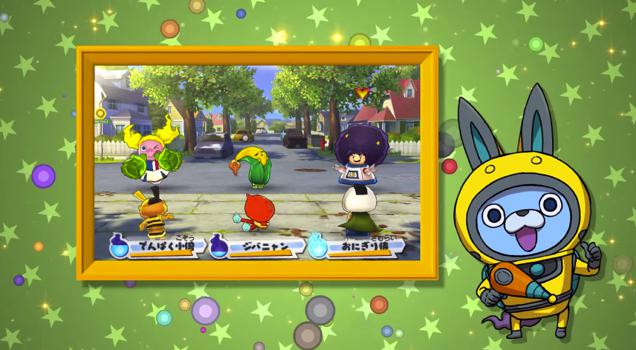
The corn character is named “Pintokoon” (with “Koon” meaning “corn” in Japanese). The moniker is a word play on “pintokonai” ( ピンと来ない), which means “doesn’t come to mind,” “not realise right away,” or even, “look confused.”
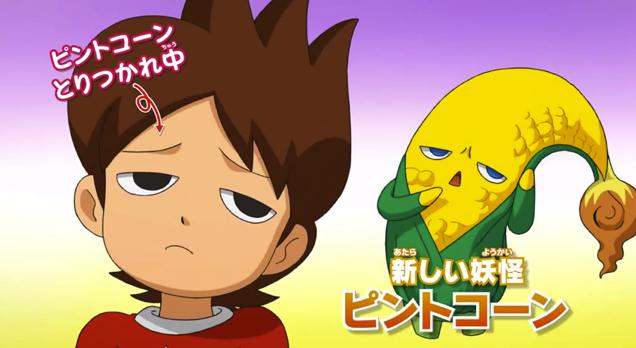
This is how I feel right now.
I haven’t played Yokai Watch 3. It’s not out. It could be fantastic. But, here’s where I start to check out. In Yokai Watch, there are characters that have existed in Japanese folklore for a very long time, such as Kappa. There are also characters that are puns on yokai. For example, the Yokai Watch character “Kuchidake-onna” (Mouth-only Woman) is a wordplay on the yokai “Kuchisake-onna” (“Slit-mouthed Woman). If you are into yokai or at least familiar with them, these clever names can make the game and the anime even more interesting.
Then, there are characters, like Tengu, who are sometimes considered deities (and other times, they’re yokai). Two of the most popular characters in Yokai Watch, Komasan and Komajiro are clearly based on komainu, statues that stand guard in front of Shinto shrines. Shrines and Shinto imagery appears throughout the game — which makes sense because there are shrines all over Japan. Since the first two games were set in Japan, when Keita goes exploring, he is bound to come across the game’s Shinto shrine. There is also a Buddhist temple in Yokai Watch.
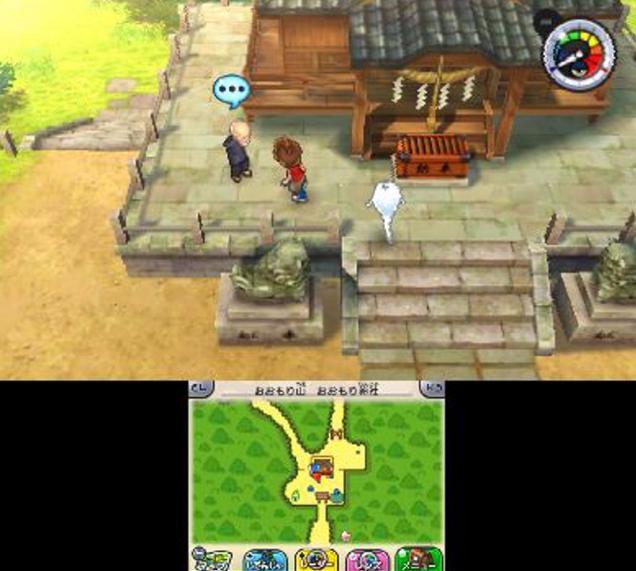
[Photo via Youkai.jp]
Then, there are other made-up yokai that are based on tropes from Japanese popular culture (such as Aniki, which, here, is based on the tough, older guy stereotype) or even Japanese history (such as Benkei, who is based on, uh, Benkei). Of course, there are more current yokai created just for the show that are not Japanese, such as the Steve Jobs-inspired yokai.
Not all are traditional yokai, sure, and the game’s developer has created its own yokai world, but even with the Steve Jobs yokai, they’re grounded in Japanese society and often speak to larger issues at hand (for example, the Steve Jobs yokai is a commentary on consumerism — and even a sly comment on the Yokai Watch itself). There are jokes in the anime that fly over kids’ heads, which makes it enjoyable for parents. The Star Wars references are fun, too.
Then, there are smaller touches throughout the game and the anime, such as Japanese-style patterns and designs that show a deep understanding of the country in which Yokai Watch was created. Even when the yokai are introduced, like this new character (which is described as a “strange” yokai and doesn’t look like any yokai I’ve seen before), they are done so with senjafuda, which are Shinto shrine tags. See, there’s something unequivocally Japanese about Yokai Watch. I mean that as a huge compliment.
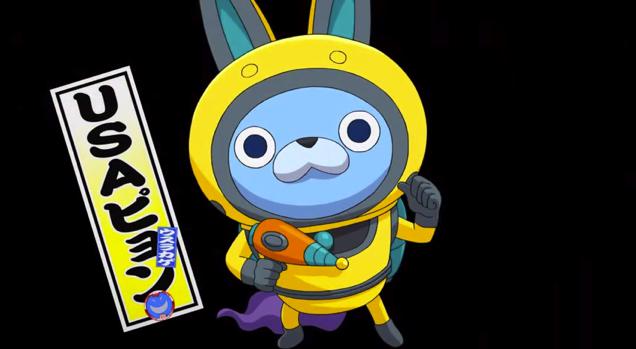
This character’s name, Usapyon, is based on “USA” (as in the United States), but is a Japanese pun on “rabbit” (usagi) and “bounce” (pyon). See, even the character names for the set-in-America Yokai Watch are intrinsically Japanese. Again, this is fine. It’s expected.
Sometimes, anime and game creators try to create things for an international market. I don’t get that feeling about Yokai Watch. To fully appreciate the game and the anime’s motifs and references, you do need a working understanding of Japanese culture. There are also pop culture references to things in modern day Japan. It feels like the creators made something they know very well and care about very much, and this comes across in the final product.
I look at the US setting, and so far, I don’t get that feeling. I’m not saying Yokai Watch 3 needs to explore Americana like, I dunno, BioShock Infinite, but the setting looks more cosmetic than anything. It also looks like a way for Level-5 to crack the Western markets with minimal risk. Localising the previous games is difficult — if not too difficult. Japanese kids will probably enjoy the change of scenery, and the next game can go back to Japan (or, quite possibly, go to another location, such as Europe).
Granted, I’ve only see a few minutes’ worth of footage, but even the new yokai (below) don’t seem to be riffs on American mythos or folklore. They just look like monsters. Japan knows what monsters are and has a word for them: モンスター or “monsutaa.” They’re different from yokai. What makes yokai yokai is their connection to Japanese culture.
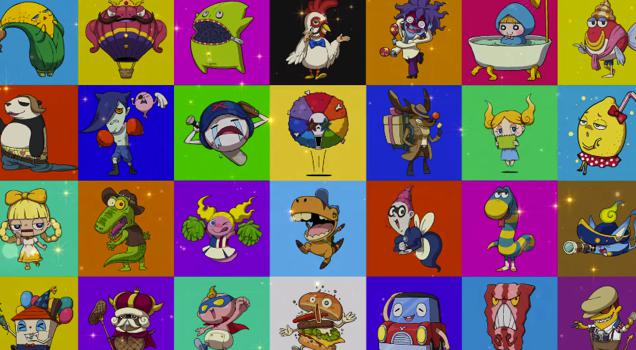
Don’t get me wrong, these are well-designed monsters. I just don’t see the deeper cultural references that appear in the previous entries. I also see a Crocodile Dundee monster. And what looks like a bacon monster. I do like the bacon monster. OK, so that nails America, but it’s still not a yokai.
I know Level-5 is difficulty of localising all those yokai names and all that baked-in Japanese culture, that might be the case. But without that culture, these aren’t yokai, and this is just another monster game. Why not call it “Monster Watch”? That would make more sense and give a more honest impression of what yokai actually are, instead of trying to brand Japanese folklore for profit.
I also know that I’m not this game’s primary audience. I showed my six-year-old Japanese son the Yokai Watch 3 trailer, and he seemed excited. He can’t wait to befriend these American monsters. For Level-5, that’s probably all that really matters anyway.
*Full disclosure: Tuttle also publishes my books.
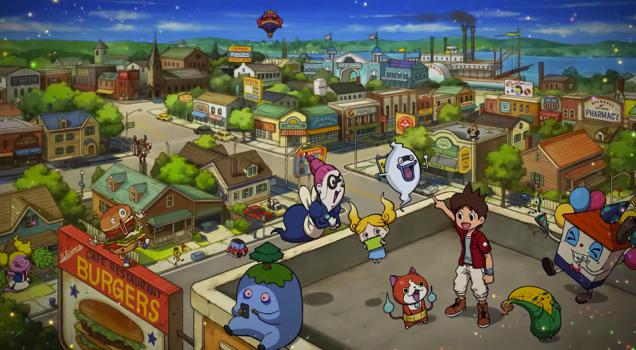
Comments
9 responses to “Japan’s Biggest Game Heads West And Might Not Work”
I reckon that full disclosure footnote could be a few font sizes smaller, eh?
Anyway, I am sure the same thing was said about Pokemon 20 years ago and look how that turned out
Exactly, there’s a lot of Japanese culture baked into Pokemon (eg. Bowing, falling over at bad jokes, word play, Meowth being a Maneki Neko, and who can forget the “donuts”…) that hasn’t really hampered the series ability to take off in the West.
That Donuts thing fucked me up well into my teenage years before I realised that Jam filled Donuts/Donuts without holes aren’t Japanese.
How about the new OUTBACK Grill joint in America stating it gives a true Australian dining experience and the owners have never been to australia…
Haha, Monster Watch is terrible name! 🙂 Although, I can’t think of better one!
Yo-Kai Watch isn’t exactly fantastic either.
Ghost Band! Wrist Spooks, Poltergeist time piece.
Apple Watch…
Yeah I went there =P
It will be perfectly fine. This game is intended for both anime fans who will get most Japanese references and for kids that will not care about getting them and will not be particularly confused about their apparent randomness. Also, while “ghost” may not be the proper translation, “spirit” will work fine.